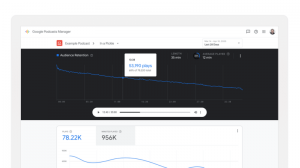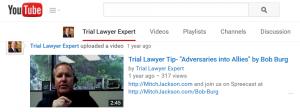
Last year, I spoke to a big B2C brand trying to convince them that a content strategy could launch them to a new level. I failed; this old dog wasn’t ready for new tricks. And that’s because their old tricks – millions and millions of dollars of newspaper advertising – is still working for them. As far as they’re concerned, it isn’t broke, so they’re not going to fix it. Business is good, they’ve done the same thing for years, and their incentive to change is low.
Makes perfect sense, right?
Stay the course.
Of course, most people realize that this course is headed over a cliff.
There are a lot of businesses that have been very successful with traditional marketing. They’ve paid significant money to have their messages delivered on well-known media properties with audiences that give them the right demographics.
However, they don’t own that audience; they’re merely renting it.
And the land on which they’re renting is worth less and less, as the influence of traditional media and interruptive advertising diminishes. At some point, they’re going to look up and realize they don’t have that audience any longer.
Because in the not so distant future, brands that don’t own their audience will be at a significant disadvantage. The companies that continue to rely upon traditional advertising are placing their bet on having access to someone else’s audience. The problem is that other party they’re relying on is almost certainly losing its audience. Or, the effectiveness of the advertising they’re selling to those brands is falling through the floor. Or both.
This is the environment we’re operating in.
But still, many marketers continue holding on to the old way of doing things – they’re spending money on advertising, renting someone else’s audience. It might work today, but the way things are going it won’t work much longer – the audience you’re renting is getting smaller and less attentive.
It’s time to own your audience.
Brands need to turn their marketing into a content-driven destination for their audience. Yes, you need to use platforms like Facebook and Youtube to distribute that content, but don’t build it there. If everything you do resides on another platform, guess what? You don’t own the audience; you’re merely borrowing them, which means you’re just one of three parties in the equation. If your audience is coming to a property you own – typically your website – it’s a one-to-one relationship. As we’ve said numerous times before, the customer is now in control of that relationship; that’s reality.
Importantly, I’m not saying “control” or “own” in an inappropriate way. I’m not suggesting that brands need to lure customers to their websites so they can trick them into buying something. We’re talking about developing a relationship based upon mutual trust – customers need to trust brands are trying to help them, and brands need to trust that customers will do business with them once develop affinity for the brand.
Facebook recently starting asking publishers – and brands, this means you – to publish content within Facebook’s mobile app. It’s tempting – Facebook drives a lot of traffic for publishers, and it can make for a better experience for users. But it requires the publisher to surrender control of its own audience to Facebook, and the social media monster has been aggressive in controlling the audience however it sees fit. In other words, it’s way too easy for the brand to lose control of its audience.
Which could leave you right back where you are now, dependent upon some third party media company to deliver your audience to you. That might be how you built your business over the last several decades, but continuing to operate this way is taking an awful big risk.
It’s a much bigger risk than Investing in the creation of a destination for that audience.
That’s really the whole point of content marketing – it’s an opportunity to build a content-driven destination for your audience and have a direct relationship with them.
The alternative is to keep doing what you’re doing. But someday, probably soon, the audience could be gone.
Business & Finance Articles on Business 2 Community
(356)






